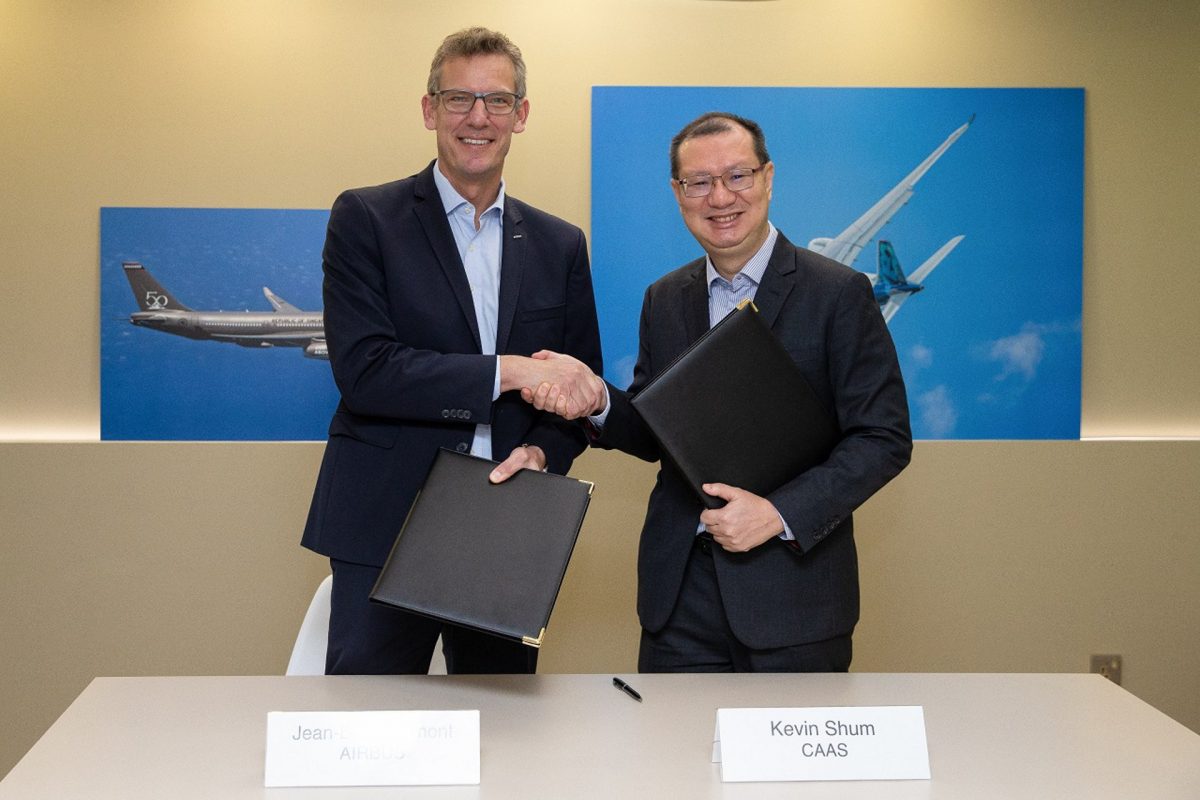Singapore is one step closer to an efficient and innovative air delivery system with the signing of a Memorandum of Understanding between Airbus and the Civil Aviation Authority of Singapore (CAAS).
With an agreement penned on Wednesday 12 February, Airbus will work with CAAS in the definition and development of an urban air mobility (UAM) system in the city-state.

As Singapore’s dense urban environment provides an ideal landscape for an air delivery system, the newly formed collaboration will focus on the development of a service that utilises unmanned aircraft systems (UAS), and the unmanned traffic management (UTM) process to guide it.
Airbus and CAAS will build on their existing relationship, formed in 2016 when they first partnered on the Skyways project. This initiative examined the development of a safe unmanned air delivery system that could be utilised in densely populated cities, such as the urban core of Singapore.
With a proof-of-concept completed in 2019, Skyways demonstrated it was possible to successfully deliver parcels in a series of trials undertaken at the National University of Singapore. Additionally, the system was used to transport consumables and 3D-printed items to ships at Singapore’s busy Eastern Working Anchorage.
With Skyways providing first-hand learning’s, Airbus and CAAS entered into an agreement with the European Union Aviation Safety Agency – working together on the development of operational safety standards for unmanned aircraft systems operating in urban environments.
As the capabilities of Skyways are proven, the system will form the backbone of future tests. Airbus and CAAS will focus on system connectivity, navigation and other elements essential for long term unmanned traffic management.
“Airbus is constantly seeking ways to drive new frontiers in air mobility. We are excited to take the next step with our long-standing partner CAAS, with a shared vision of developing urban air mobility and the supporting UTM systems and services to bring a safe and reliable transportation solution to people,” said Jean-Brice Dumont, Executive Vice-President, Engineering, Airbus, who was represented Airbus at the Singapore Air Show where the agreement was signed.
The scale of delivering a successful unmanned traffic management system is significant, and will require a period of public consultation. Both Airbus and CAAS will work together to develop standards and create relevant safety protocols, as well as foster public support for the programme.
Additionally, both organisations will commence feasibility studies and identify requirements for additional urban air mobility systems, looking at both passenger transport and cargo deliveries.
Kevin Shum, Director-General of CAAS represented CAAS at the signing of the Memorandum of Understanding, commenting: “CAAS supports the beneficial development of UAM. It fits within our Smart Nation vision, where we aim to take full advantage of technology to solve problems, address challenges, and develop Singapore into one of the most outstanding cities in the world to live in.”
“That is why we seek to collaborate with businesses to push the boundaries of their applications. Such collaborations, including our longstanding CAAS-Airbus partnership, build Singapore’s capabilities and expertise to enable advanced UA applications, particularly in our urban environment.”

















John
says:Interesting development! Pizza delivery by drone in the future?
What are the numbers like at the airshow this year?
John
says:Interesting stuff!! Singapore is very forward looking.
Razza
says:Skeet shooting with prizes
Ric
says:Will this go ahead with the current crisis?
Victor
says:Seems even more likely. This crisis is promoting a move to lower-scale movements, passenger wise, and being that international movement will remain impaired for a good while, then increasing the responsiveness and capability of local travel seems like a smart move. Outside of the passenger front though, the move to e-commerce is continuing to go from strength to strength, and by further embracing low-scale but nimble delivery (i.e. automated freight drones), it seems to make a lot of sense.